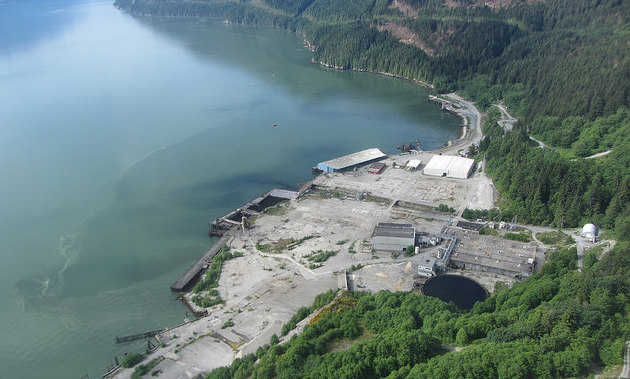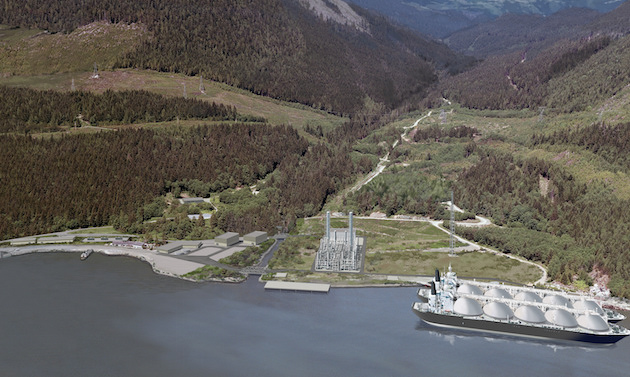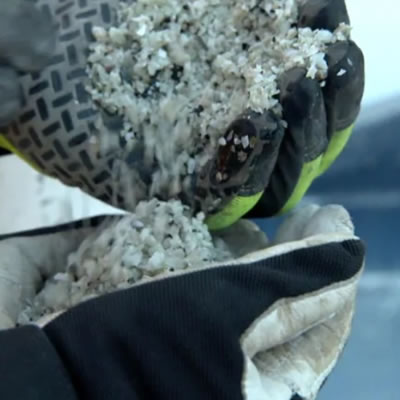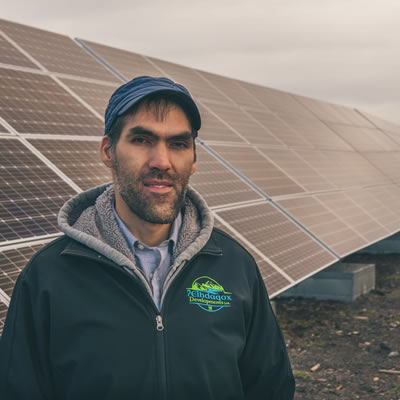Woodfibre LNG is breaking environmental ground
Woodfibre LNG has above-and-beyond environmental platform

Aerial shot of the proposed Woodfibre LNG site where the company is hard at work remediating the environmental effects of 100 years of industrial activity by the previous owner. — Photo courtesy Woodfibre LNG
In the race to be the first company to produce LNG for export from British Columbia, Woodfibre LNG is making good ground and turning heads in the process. There is a good mix of large-, mid- and small-size companies in the race, but Woodfibre LNG is breaking environmental ground with an above-and-beyond environmental platform and consultation process that is speeding the project forward despite low gas prices.
The proposed Woodfibre LNG site is within the District of Squamish and traditional territory of the Squamish First Nation, just seven kilometres southwest of downtown Squamish.
It is licensed to export approximately 2.1 million tonnes of LNG annually via 47 kilometres of new piping beginning in north Coquitlam and ending at the existing Woodfibre site.
Part of the work will also include upgrades to compressor stations at Eagle Mountain and Port Mellon, and a new station at Woodfibre LNG.
The project is located on a 100-year-old industrial site that required significant remediation to meet a purchase requirement that the site be brought up to today’s environmental standards before commencing production.
Hundreds of truckloads of contaminated soil were removed from the shoreline, and four on-site landfills have been closed and remediated while progress continues.

Rendering of the Woodfibre LNG facility planned for Squamish, just seven kilometres southwest of downtown — Photo courtesy Woodfibre LNG
Woodfibre LNG is in the middle of the environmental assessment process with both the provincial and federal governments and expects to have it wrapped up by the end of July. Subject to approval, the project will have its certificate in mid-September, with additional permitting taking an additional four to five months before construction.
“There is a lot of work involving thousands of pages and meetings, but nothing from a regulatory perspective looks insurmountable,” said Byng Giraud, vice-president of corporate affairs for Woodfibre LNG.
The facility will focus on the export market, making about 36 to 40 shipments per year.
“We are about a ninth the size of the larger sites,” said Giraud. “We are in negotiations with clients in Asia and have an MOU (Memorandum of Understanding) in Asia for half the amount but are still pursuing buyers.”
The company’s business model is different from other facilities’ as its parent company—Pacific Oil & Gas Limited, which is part of the Singapore-based RGE group of companies—already owns 35 per cent of an import facility in the Rudong Province of China.
“Because we are smaller and have other options, we are more confident we will find a place for our gas,” said Giraud. “We have more flexibility and the price of gas doesn’t scare us off from the project.”
The project’s biggest concern at the moment is its proximity to the Lower Mainland, where some people have concerns about LNG facilities in general.
“The Government of B.C. has been supportive and we are working closely with communities and First Nations—the support is the distinctive nature of this project, and it is progressing and moving quickly and has a higher likelihood of success.”
The facility’s layout takes into account the approval of nearby communities and environmental considerations. The drives used to keep the product cold, for instance, will be run on electricity rather than natural gas to lower greenhouse gas emissions by 80 per cent.
“Our power is from BC Hydro, which is 90 per cent renewable,” said Giraud. “We are making this facility among the greenest in the world.”
Woodfibre LNG also considered constructing the facility on the water, but responded to communities’ concerns about oceanic acoustics and replanned it on land.
“There was a clear preference that we do that, and we wanted to make it right for the community,” he said.
The project will benefit from existing infrastructure as there already is a pipeline in place, and work to upgrade it will be minimal.
“We will have to twin the line for 40 kilometres, compared to building hundreds of kilometres of new pipeline up north,” sad Giraud. “Also, it is an historic deep water site, so there will be no dredging, and we are cleaning the site where there used to be four old landfills.”
The company had to get a certificate of compliance to remediate the soil after 100 years of industrial development by the previous forestry company landowners.
The site clean-up will also remove approximately 3,000 creosote-coated piles from the waterfront and create a “green zone” around Mill Creek, which runs through the centre of the project site.
“We also voluntarily entered into a process with the Squamish First Nation, and they are running their own environmental assessment,” said Giraud. “That will result in some outcomes that are above and beyond the provincial and federal requirements and the commitment we have to go above and beyond typical consultation.”
“The Squamish First Nation will have a greater than usual say in how this project develops, and I think it makes a lot of regulators nervous because it is new, but it is the right thing to do.”
Squamish residents are expected to have access to 650 jobs during the two-year construction period and 100 long-term jobs once the project is complete.
“You never know what the future holds,” said Giraud. “Right now, even with lower prices, we don’t see a reason to take our foot off the gas, and hopefully we will be one of the first operating facilities in the province over the next couple of years.”




